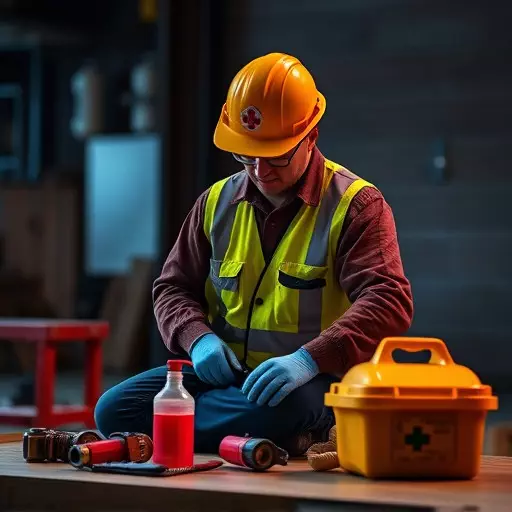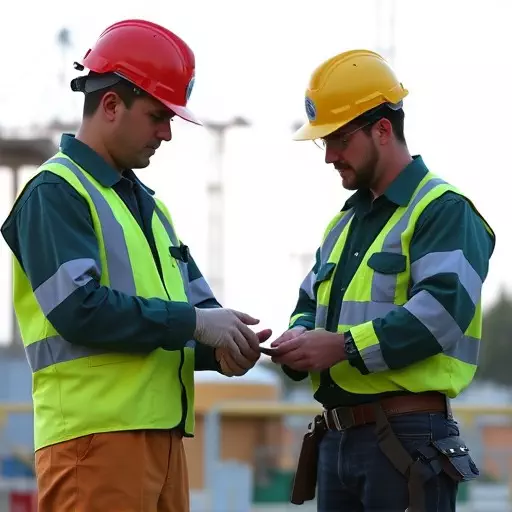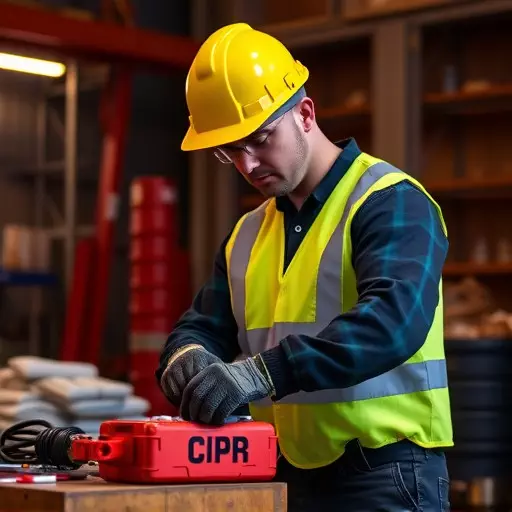In today’s fast-paced construction industry, being prepared for workplace emergencies is paramount. Cardiopulmonary Resuscitation (CPR) is a vital skill that can save lives, making it an essential component of any comprehensive safety program. This article explores the critical role of CPR in construction settings, covering everything from understanding CPR’s importance to OSHA requirements and choosing the right training programs. We’ll delve into first aid basics tailored for construction workers, best practices, real-life scenarios, and how to implement effective CPR protocols on site.
- Understanding CPR: Why It's Crucial for Construction Workers
- The First Aid Basics Every Construction Worker Should Know
- OSHA Requirements for CPR Certification: A Comprehensive Overview
- Choosing the Right CPR Training Programs for Construction Sites
- Implementing CPR Protocols in the Construction Industry Best Practices
- Real-Life Scenarios and Case Studies: Preparing Construction Workers for Emergencies
Understanding CPR: Why It's Crucial for Construction Workers

For construction workers, understanding CPR goes beyond mere knowledge; it’s a vital skill that can save lives on the jobsite. Construction environments present unique risks where cardiac emergencies aren’t uncommon. Knowing how to perform cardiopulmonary resuscitation (CPR) allows these workers to respond swiftly and effectively when someone collapses. It’s not just about following first aid basics but also understanding OSHA requirements for CPR certification, ensuring that every construction site is prepared to handle such emergencies.
CPR training for construction workers isn’t just a matter of compliance with OSHA standards; it empowers them to take control in critical situations. By learning the steps involved in CPR, they can confidently and competently assist a fellow worker until professional medical help arrives. This proactive approach not only increases survival rates but also fosters a culture of safety within the workplace, demonstrating that every individual plays a role in maintaining a secure work environment.
The First Aid Basics Every Construction Worker Should Know

Construction sites can be high-risk environments, and having a solid understanding of first aid is crucial for all workers. Basic First Aid training should cover essential skills that can make a significant difference during an emergency. One of the most critical components of this training is learning Cardiopulmonary Resuscitation (CPR). OSHA requires construction companies to have a written Emergency Response Plan and ensure employees receive appropriate CPR training, especially for those who may be first on the scene when an accident occurs.
CPR training for construction workers equips them with the knowledge to respond effectively in the event of a cardiac arrest or respiratory emergency. It involves learning chest compressions, rescue breathing, and using defibrillators if available. These skills can save lives, especially since construction sites often have unique challenges, such as exposure to hazardous materials or heavy equipment, which require quick thinking and appropriate first aid measures.
OSHA Requirements for CPR Certification: A Comprehensive Overview

Choosing the Right CPR Training Programs for Construction Sites

Choosing the right CPR training programs is essential for construction sites to ensure they meet OSHA requirements and prepare their workers for emergencies. When selecting a program, consider the specific needs of your workforce. Construction workers often face unique challenges due to heavy equipment, potential falls, and other workplace hazards. Therefore, the ideal CPR training should incorporate these scenarios into its curriculum, covering advanced life-saving techniques tailored to such environments.
First aid basics for construction workers should include not only standard CPR but also training in managing traumatic injuries, such as deep cuts or fractures, which are common on sites. Additionally, programs that offer specialized modules on rescue from confined spaces or high altitudes can be invaluable, reflecting the diverse risks encountered by construction professionals. Ensuring your chosen program aligns with OSHA guidelines is crucial to demonstrate compliance and protect both workers and employers from potential legal repercussions.
Implementing CPR Protocols in the Construction Industry Best Practices

Implementing CPR protocols in the construction industry is a vital step toward ensuring worker safety and readiness for emergencies. Construction sites present unique challenges due to their dynamic nature, heavy equipment, and potential for accidents involving trapped or unconscious individuals. Therefore, providing comprehensive CPR training for construction workers is an essential component of first aid basics tailored to this industry.
To meet OSHA requirements for CPR certification, construction companies should adopt best practices that include regular training sessions, accessible equipment, and designated personnel certified in CPR and first aid. These protocols should be integrated into the company’s overall health and safety program, with clear guidelines for when and how to administer CPR in various scenarios common on construction sites. Regular drills and updates can help keep everyone prepared and confident in their ability to respond effectively during emergencies.
Real-Life Scenarios and Case Studies: Preparing Construction Workers for Emergencies

In the fast-paced and often hazardous environment of construction sites, being prepared for emergencies is paramount. Real-life scenarios can vary widely, from accidents involving heavy machinery to workers collapsing due to medical emergencies. Case studies from around the industry highlight the importance of comprehensive CPR training for construction workers. Not only does this include learning the first aid basics, but also understanding how to respond in situations where every second counts.
OSHA requirements for CPR certification play a crucial role in ensuring safety. Regular CPR training sessions, updated to meet current standards, equip workers with the skills needed to handle emergencies effectively. These programs often include hands-on practice and scenario simulations, allowing construction workers to gain confidence in their abilities. By fostering a culture of preparedness, employers can significantly enhance the safety and well-being of their workforce.


